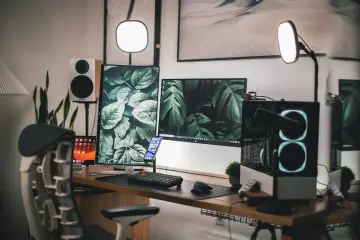Do you have a business where providing photos of products to your customers is essential? If so, you might want to learn more about product photography and how to get started in this field right away.
In this post, we’ll give you a quick introduction to product photography. We’ll also share some photography ideas, the benefits, and all the information you might need to start working on these types of photos for your business.
Key Elements of Product Photography
Product photography is a key element in any successful marketing and sales campaign, as it enables businesses to showcase their products. It allows businesses to educate customers and show the features of their products. Key elements of product photography include lighting, setting, product placement, and angle.
Lighting should be bright and consistent, capturing the detail and color of the item being photographed. Background and props should be minimal and not distract from the product. Product placement should be done in a way that is both effective and aesthetically pleasing.
Lighting Techniques
Lighting is the most important factor to consider when setting up a product shot. Professional product shots rely on the use of diffused light to reduce hard shadows as well as to make sure the product stands out in the photograph. Setting up a good light balance can also prevent overexposed or undersaturated images.
Reflectors are also useful to fill in a dark spot and blend out any harsh shadows in the shot. You can use mirrored surfaces as well as dark-colored backdrops as reflectors to do this. Additionally, backdrop color can also play a big role in creating contrast and a professional look to a product shot.
Low-key lighting is also a popular tactic used to take product photographs. By using light walls, more shadows are created in the image. This creates contrast and draws attention to the product in focus. Ultimately, correctly lighting a product shot is the key to a professional finish.
Right Angle
Many aspects come into play when capturing the right angle for your product, including lighting and angles about the product’s features. Capturing the angle to highlight product features in the correct angle can help draw attention to that given feature and make a product more appealing. Angles should also be taken into consideration to give the product life and a sense of depth.
Certain angles, such as overhead shots and close-up product shots can help highlight the product’s features and better market the product altogether.
Maximizing Your Output With Automation
Automation can be used to enhance your product photography output. Photo editing software and camera rigs can be used to make sure each product shot is consistent and professional. This can help reduce editing time and ensure that a consistent, high-quality look is achieved for all products.
Automated studio lighting can also help you create a consistent look. By setting up custom light layers, you can produce consistent products that won’t require much editing time. You can also check this link on photo editing checklist for your automation.
Understanding the Basics of Product Photography
Product photography is a great way to highlight a product’s features and benefits. It can also help businesses stand out from the crowd and ensure their products look professional. With the proper resources and knowledge, anyone can learn the basics to take photographs and start to create stunning product shots. So, why not give it a try today? You never know; you might discover an unexpected talent!
If you love this post, make sure to check out our other great content.








